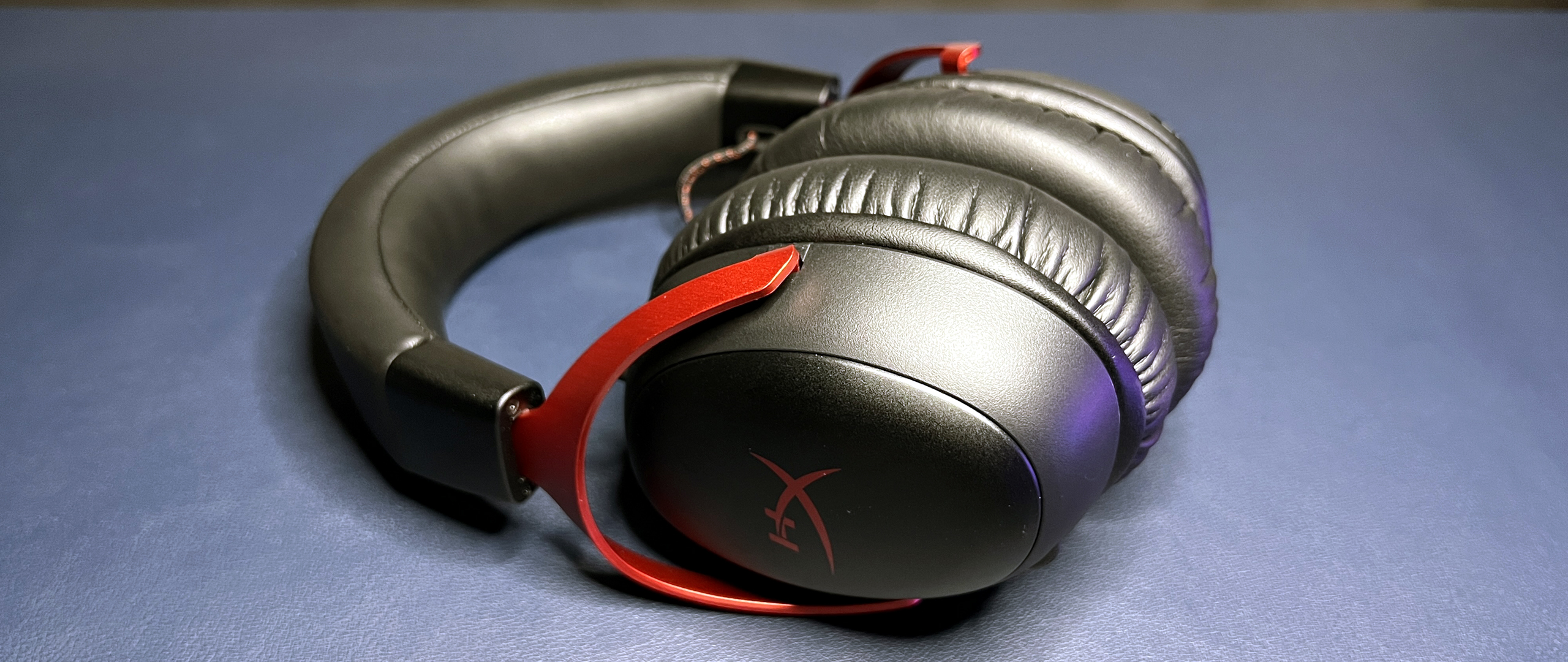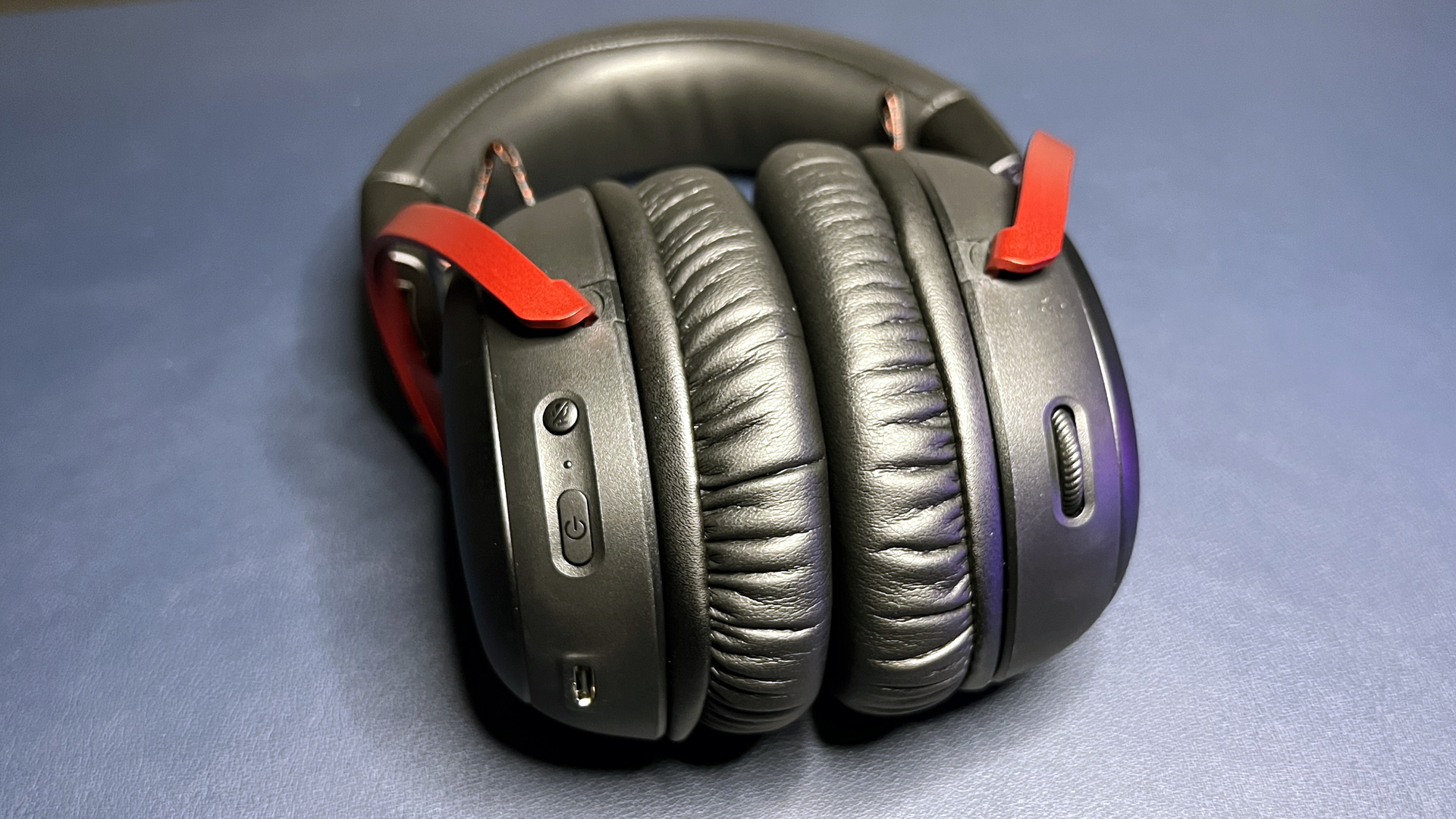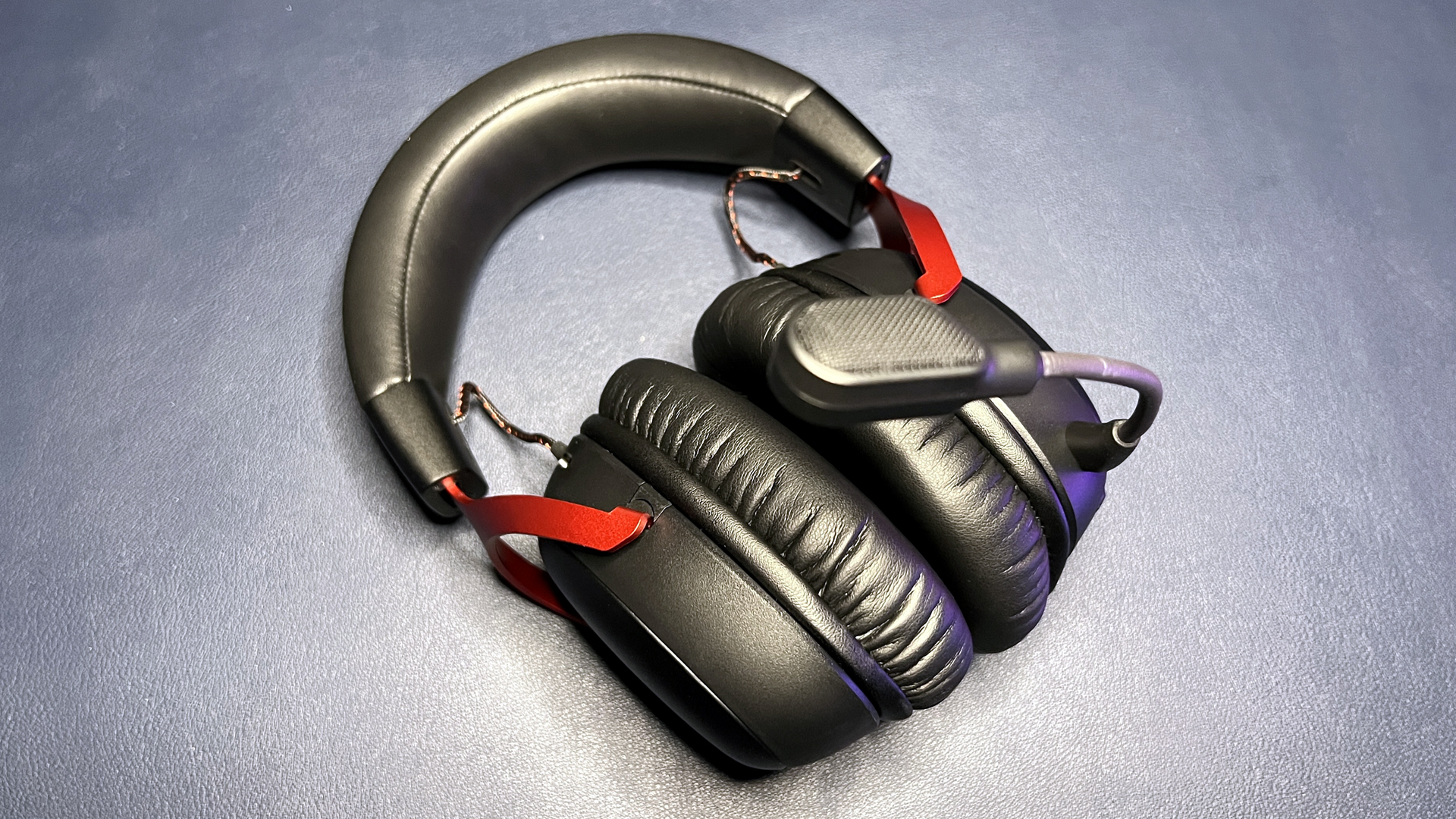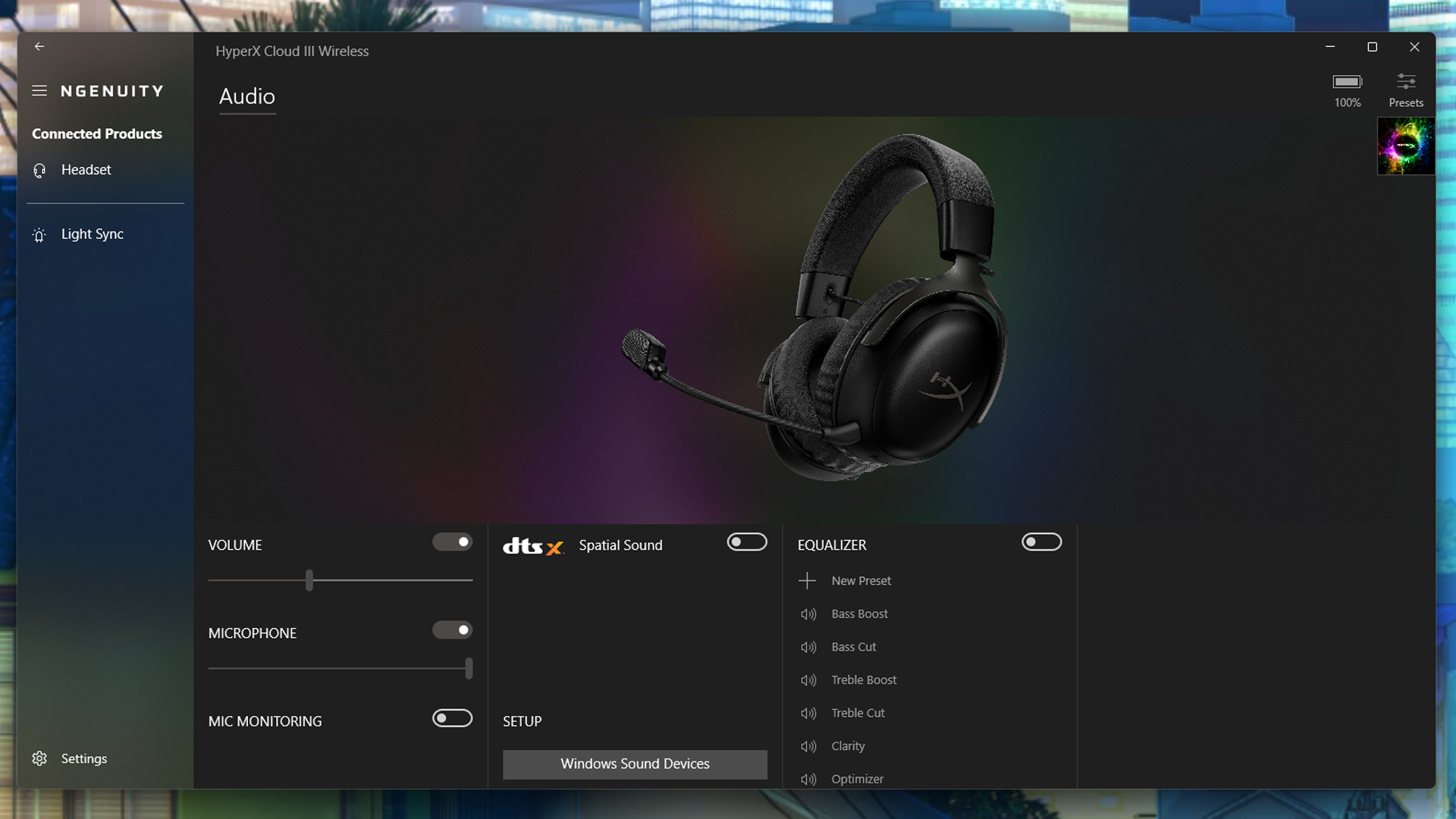Tom's Hardware Verdict
If this headset had Bluetooth, it would be perfect.
Pros
- +
Very comfortable
- +
Looks good
- +
Excellent battery life
Cons
- -
Only connects via 2.4GHz wireless
- -
Virtual surround is underwhelming
- -
A little pricey
Why you can trust Tom's Hardware
Earlier this year, HyperX launched the latest in its lineup of Cloud gaming headsets — the Cloud III. Like its predecessor, the Cloud III offers decent quality audio in a surprisingly affordable package. So it’s not too surprising that HyperX has just announced a wireless follow-up at Gamescom 2023: the Cloud III Wireless.
The Cloud III Wireless takes the design, build quality, and tech upgrades of the Cloud III — including the latter’s fully redesigned 53mm dynamic drivers — and cuts the cord. This sounds like a great idea, as the Cloud III is one of the most comfortable headsets I’ve ever worn, and it’s impressively high-end looking for its modest $100 price.
In fact, the Cloud II Wireless would be a shoe-in for one of the best gaming headsets if it didn’t take after its actual predecessor — the Cloud II Wireless — which was just like the Cloud II, but slightly too expensive and with only one connectivity option (2.4GHz wireless). The Cloud III Wireless also sports only one connectivity option — 2.4GHz wireless with a USB-C dongle, which makes it compatible with a variety of devices but unable to connect with more than one at a time. It’s also quite a bit pricier than its wired counterpart at $170.
Design and Comfort of the Cloud III Wireless
The Cloud III Wireless is a wireless, closed, over-ear headset with a detachable boom microphone. It looks just like the HyperX Cloud III, which launched earlier this year, minus the wires.
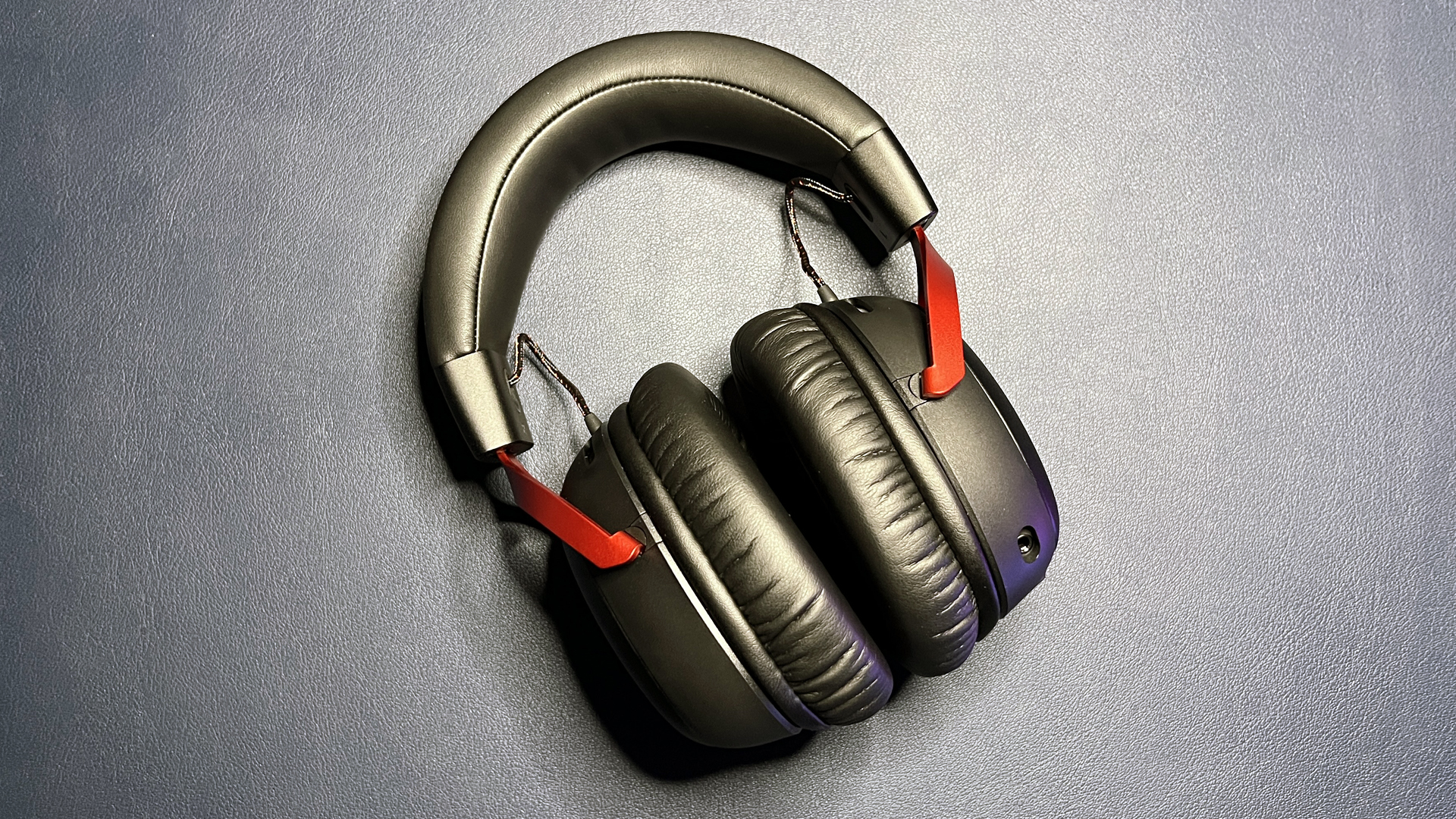
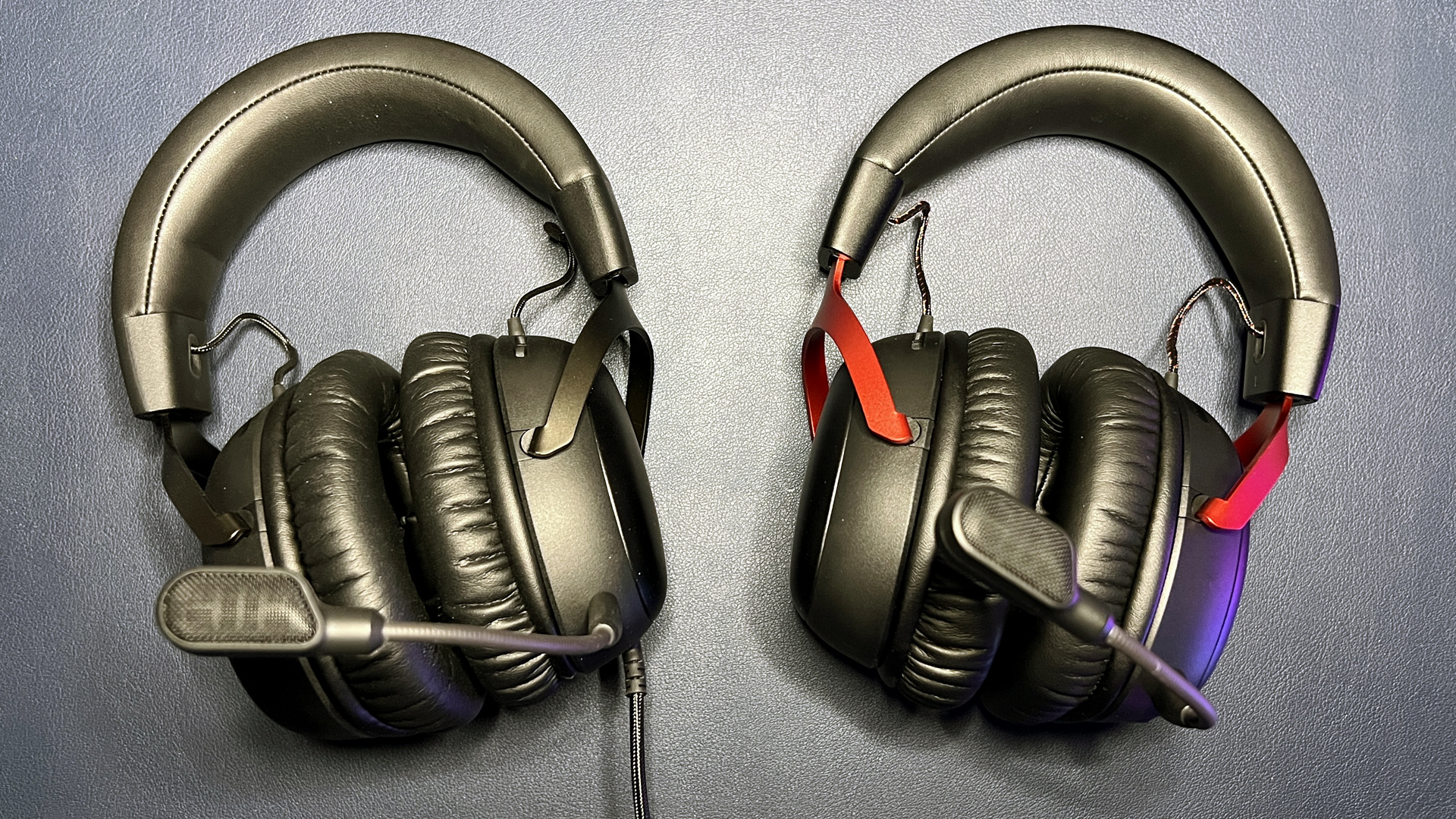
Like the wired Cloud III, the Cloud III Wireless comes in two colorways: black and black/red — our review unit was black/red, with red aluminum forks and HyperX’s HX logo printed on each earcup in metallic red. The Cloud III Wireless sports the same design upgrades as its wired counterpart: a sleeker overall profile with curved aluminum forks and a padded leatherette headband without the previous Cloud headsets’ contrast stitching, as well as extremely soft, comfortable leatherette-covered memory foam earpads. While neither headset has active noise cancellation (ANC), the earpads’ seal offers decent passive noise cancellation.
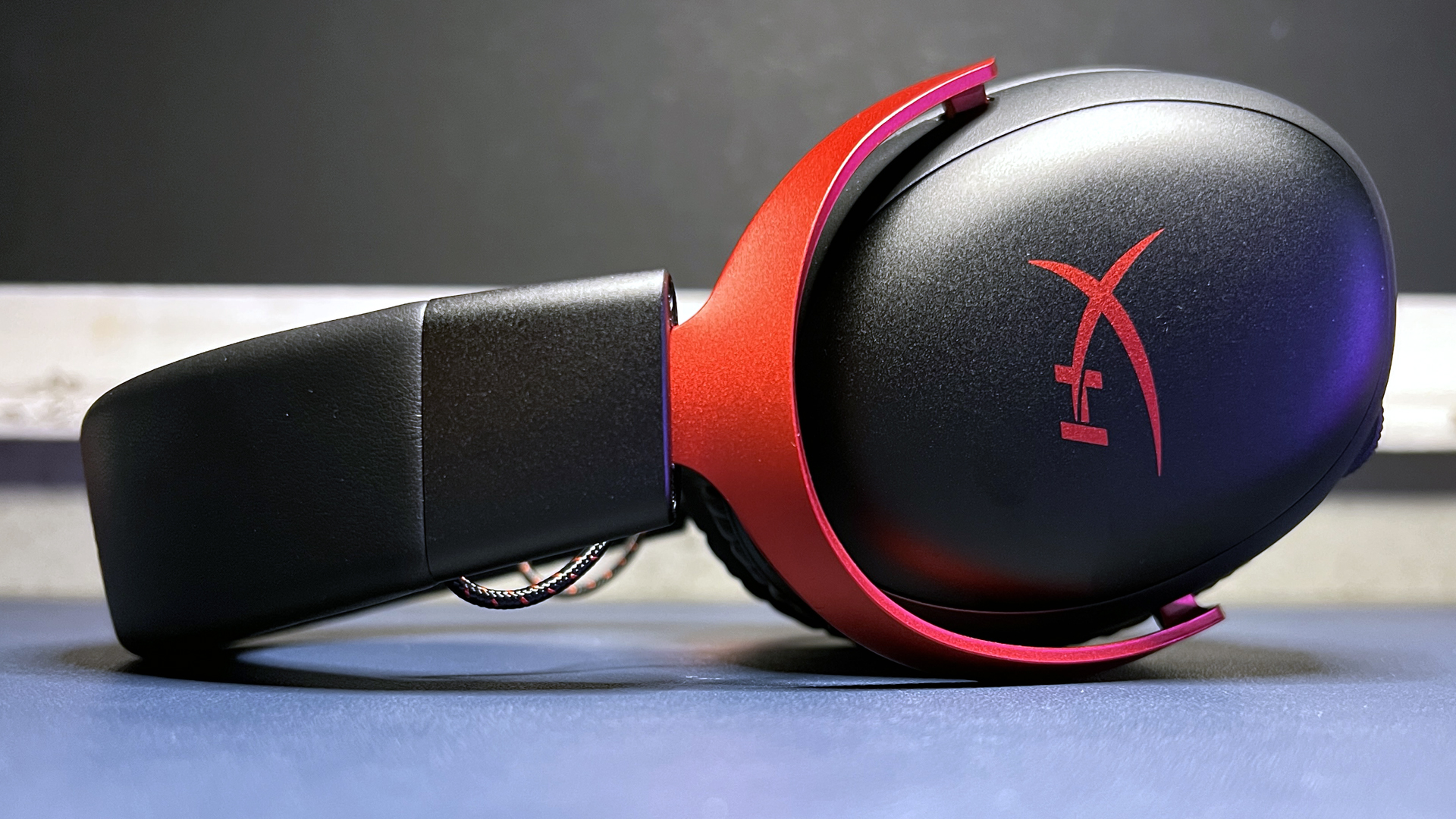
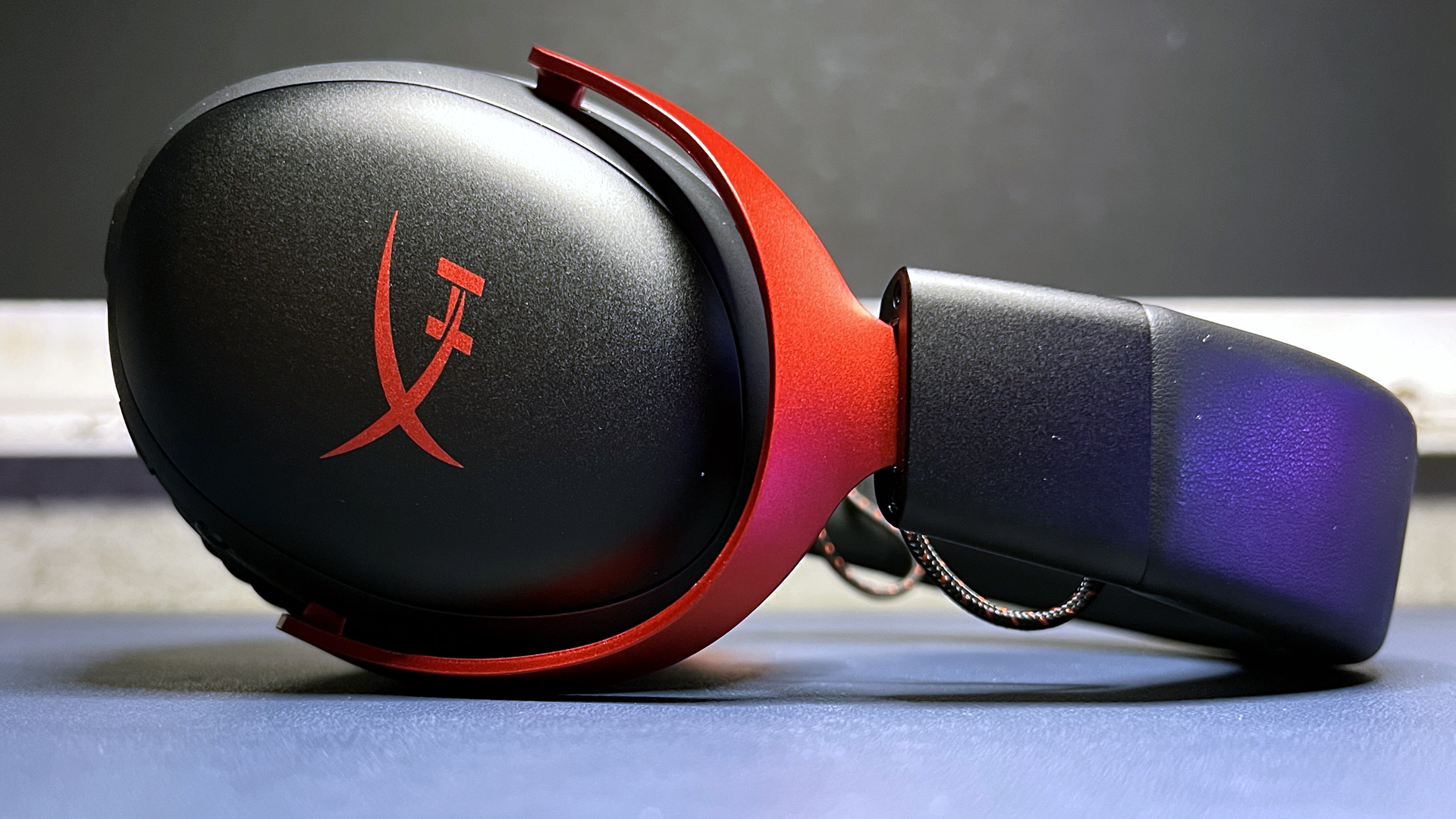

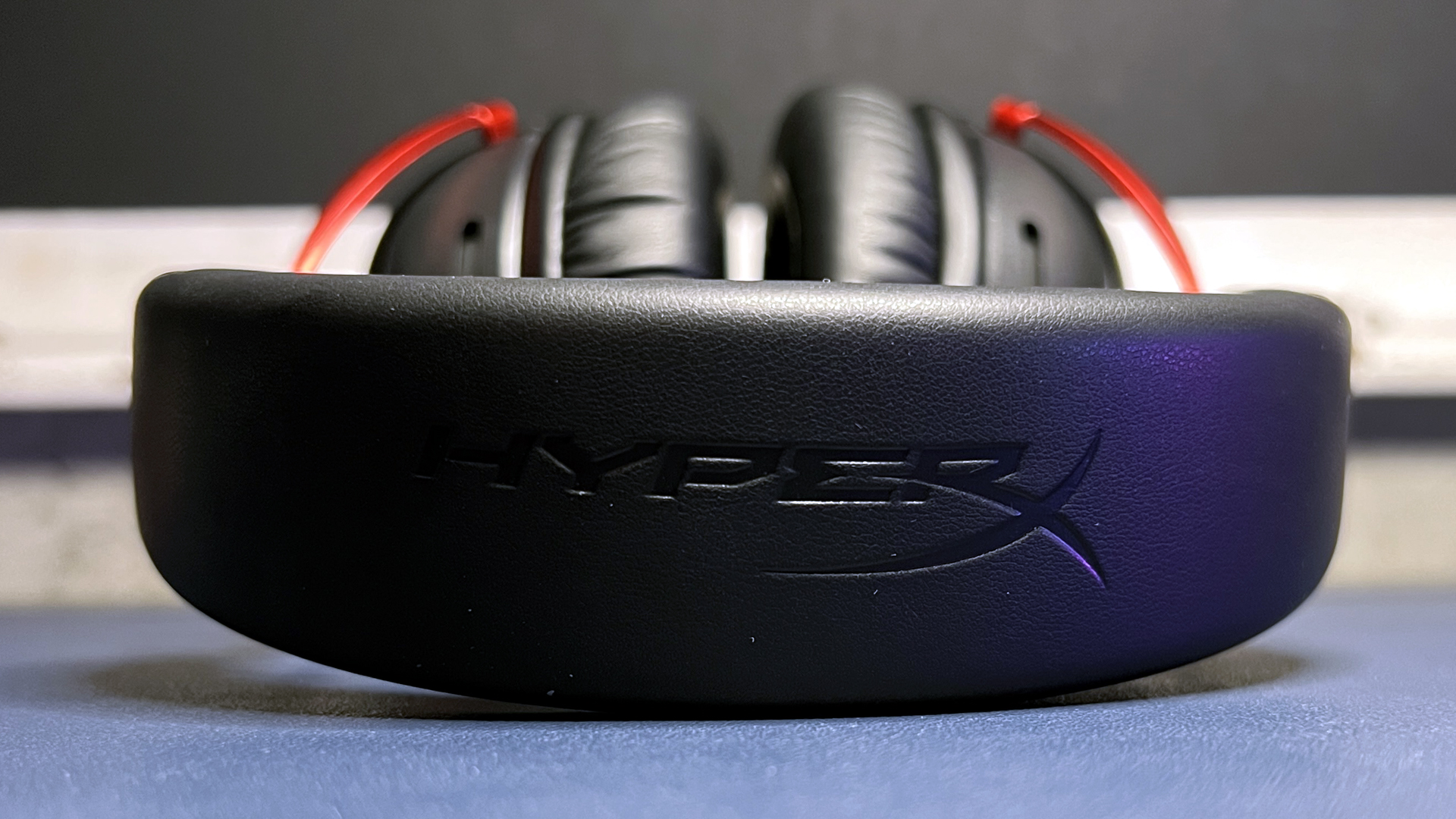
The Cloud III Wireless is slightly heavier than the Cloud III, but not by much: the Cloud III Wireless weighs 11.64oz (330g), while the Cloud III weighs 10.86oz (308g). With the microphone plugged in, the Cloud III Wireless weighs 12.06oz (342g), which is very close to what the SteelSeries Arctis Nova Pro weighs (11.96oz / 339g). Numbers aside, the Cloud III Wireless is, along with its wired counterpart, one of the most comfortable headsets I’ve ever worn. The clamping force is somehow perfect for me — just tight enough that the headset doesn’t budge when I tip my head back, but no tighter.
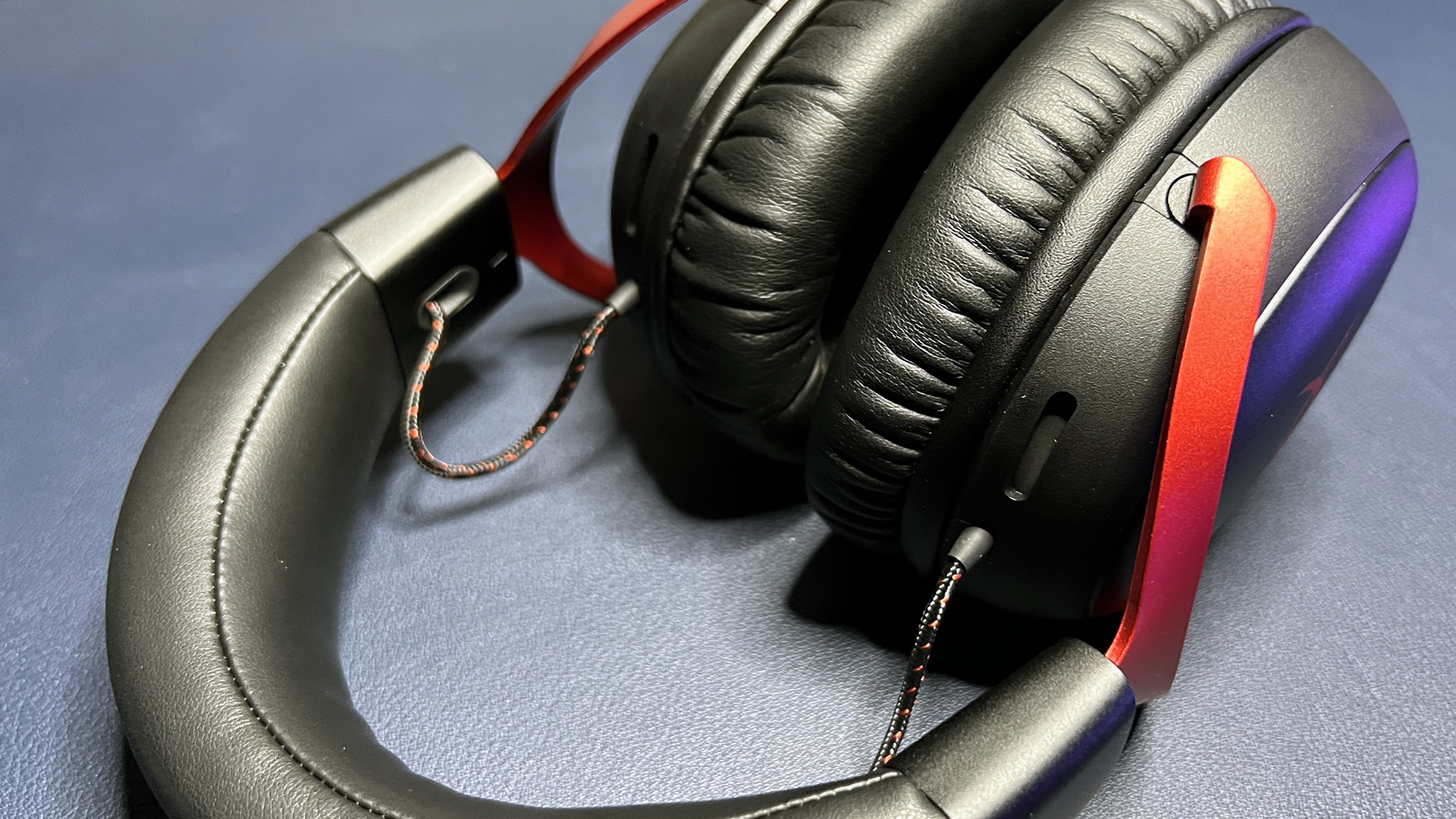
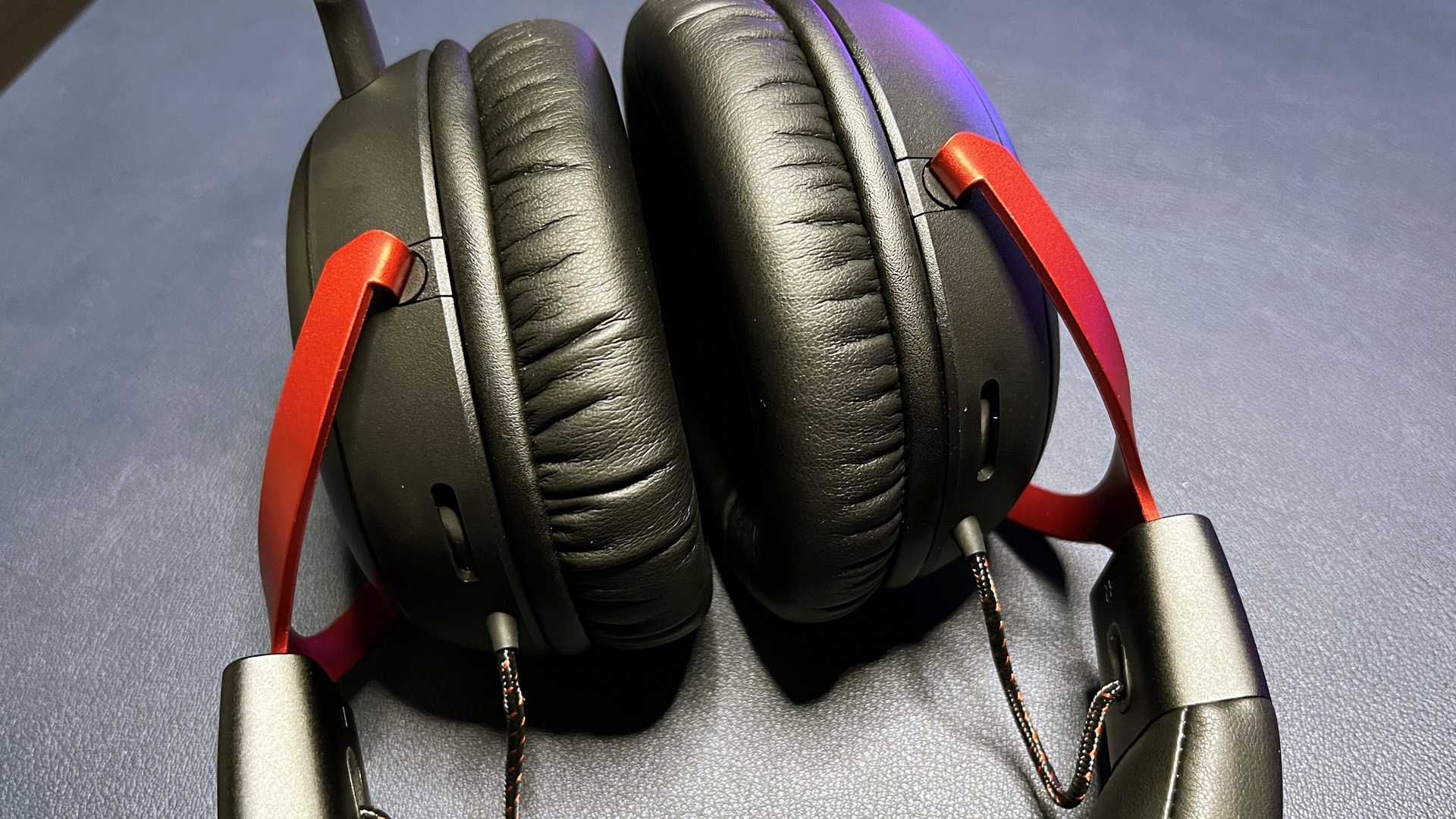
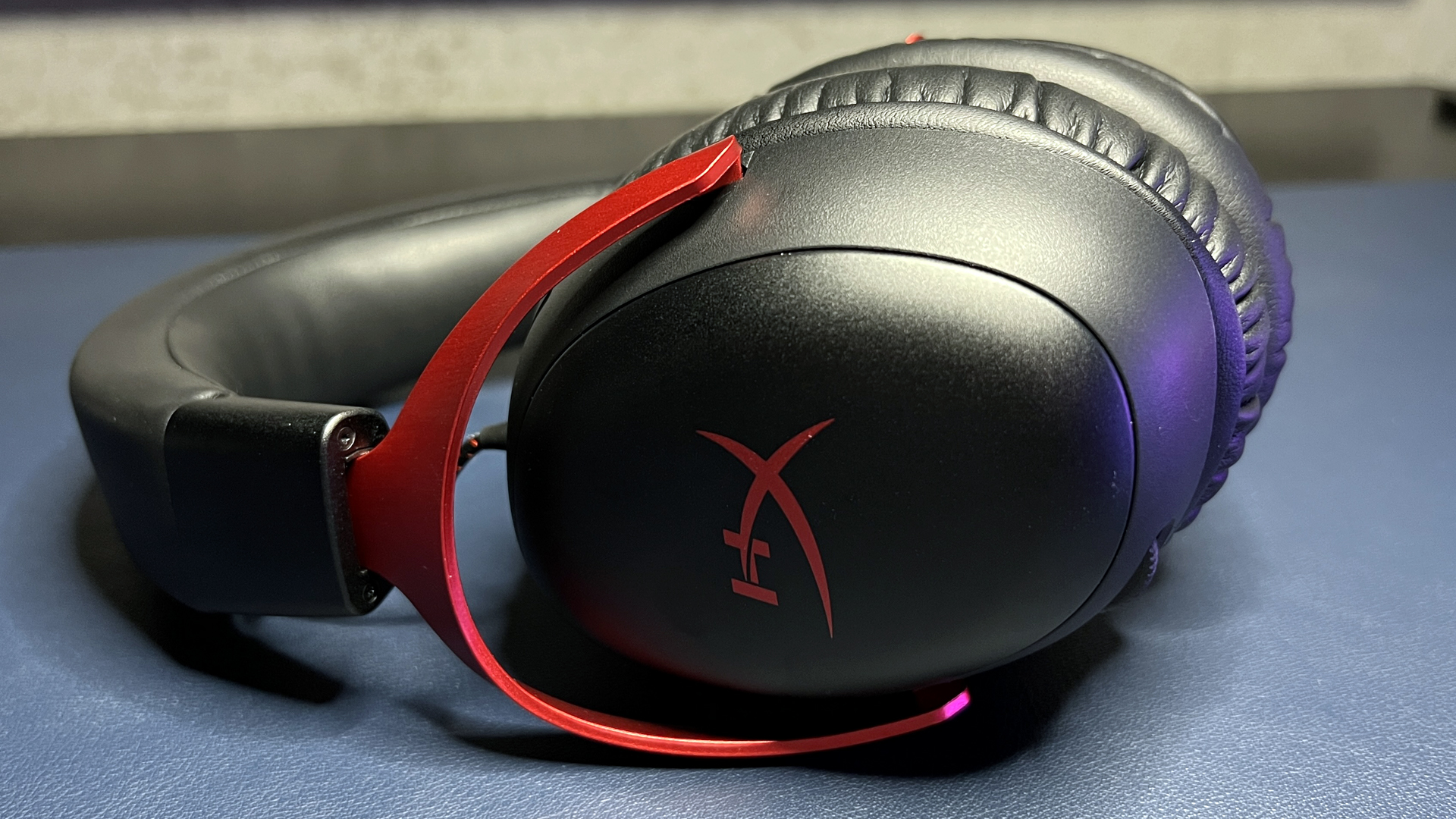
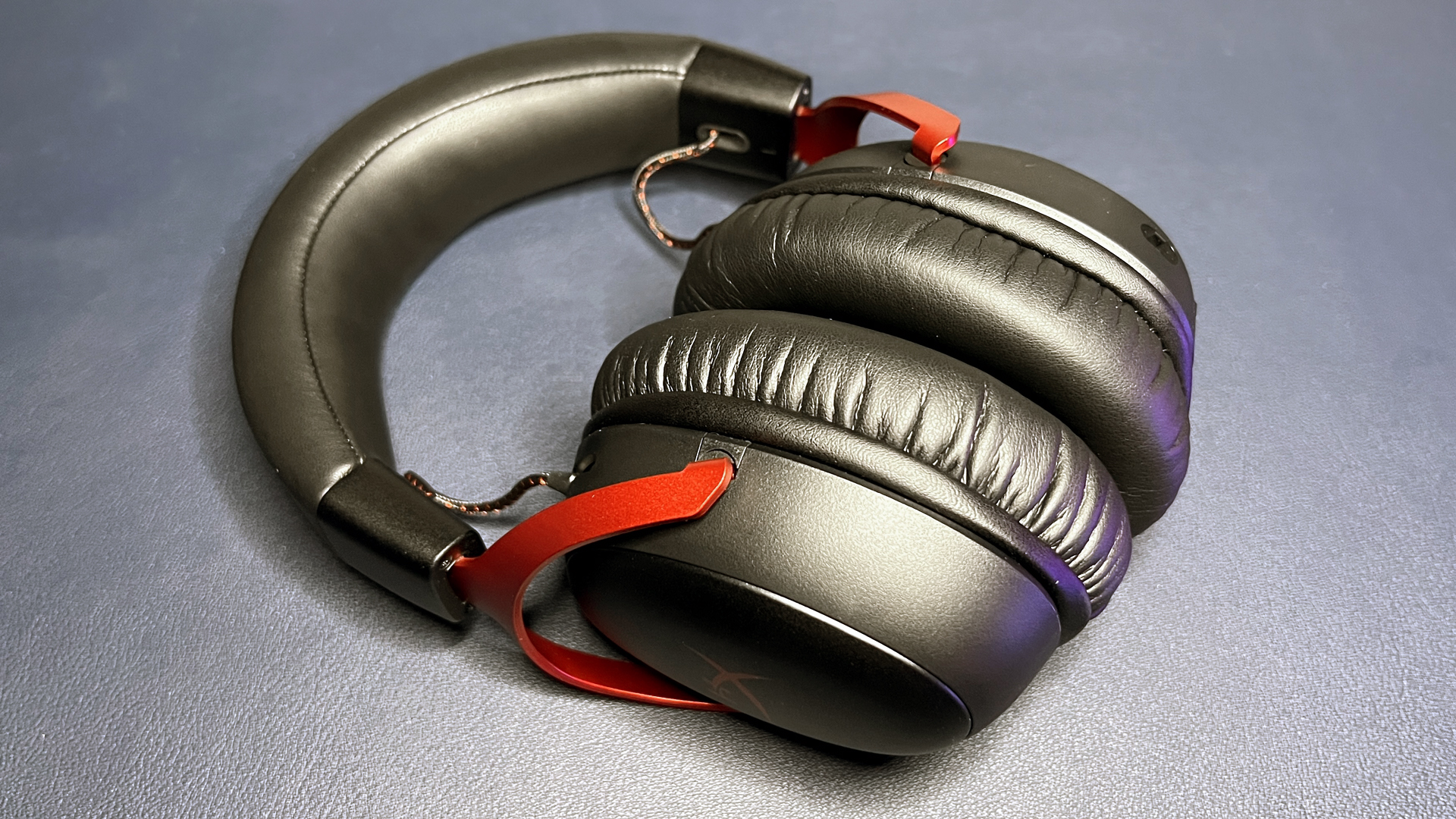
Each of the Cloud III Wireless’s earcups is independently height-adjustable with nine notched steps (10, if you count the default) that extend the headband an extra 1.5 inches (38mm) per side. The earcups tilt but do not swivel; the headband is very flexible, so the earcups’ lack of swivel shouldn’t prevent you from finding a good fit (though it’s not a great headset for travel, as it doesn’t fold flat).
Get Tom's Hardware's best news and in-depth reviews, straight to your inbox.
The headset has three on-ear controls: a volume wheel on the right earcup, and a microphone mute button and a power button on the left earcup. The volume wheel is just a volume wheel — textured, unclickable, and with very light notching. The round microphone mute button is located above the oblong power button and (unsurprisingly) only functions when the mic is plugged in. Pressing the mute button with the mic plugged in plays a tone and activates a small red indicator LED located on the microphone, so you know when you’re muted.
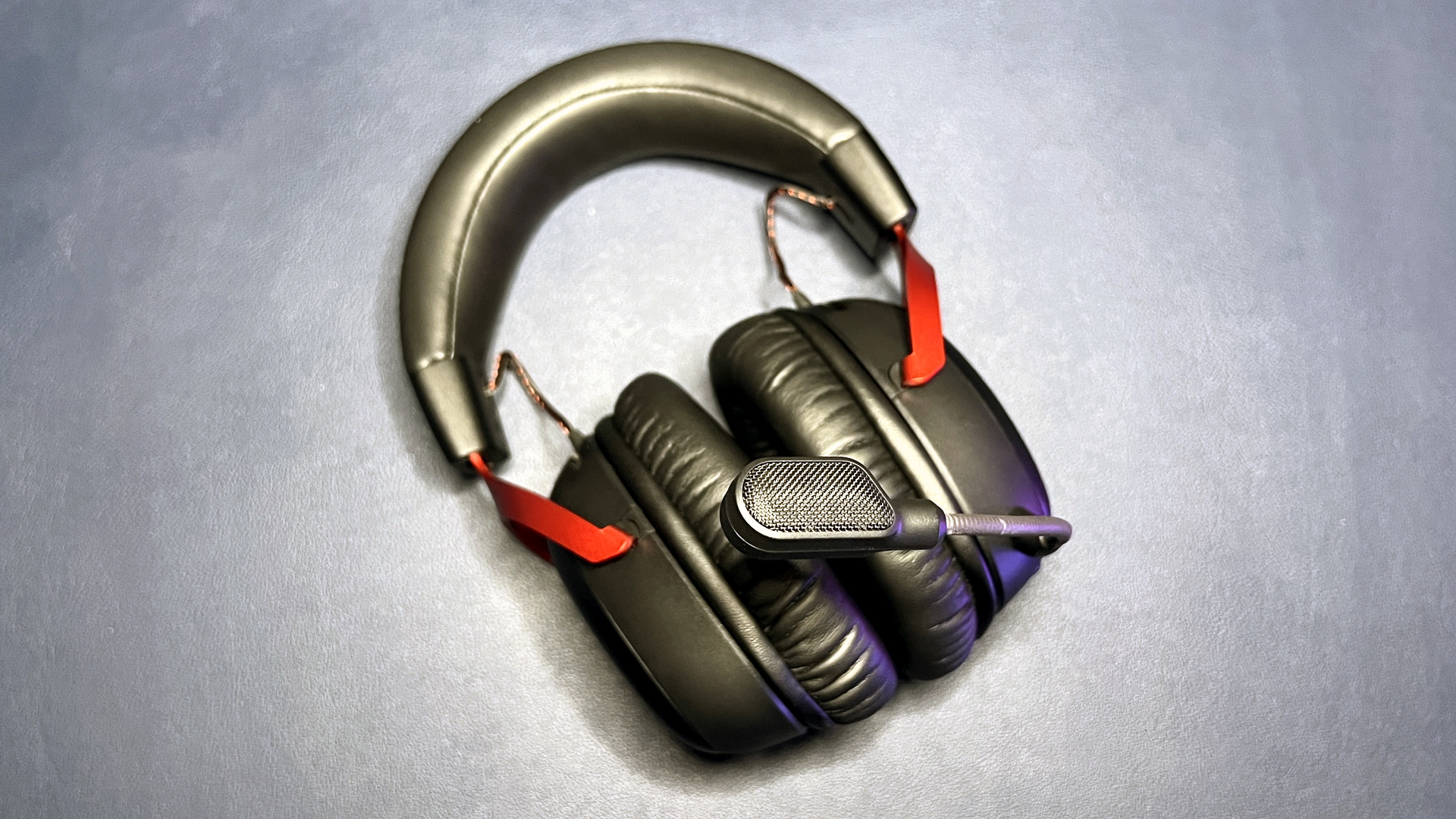
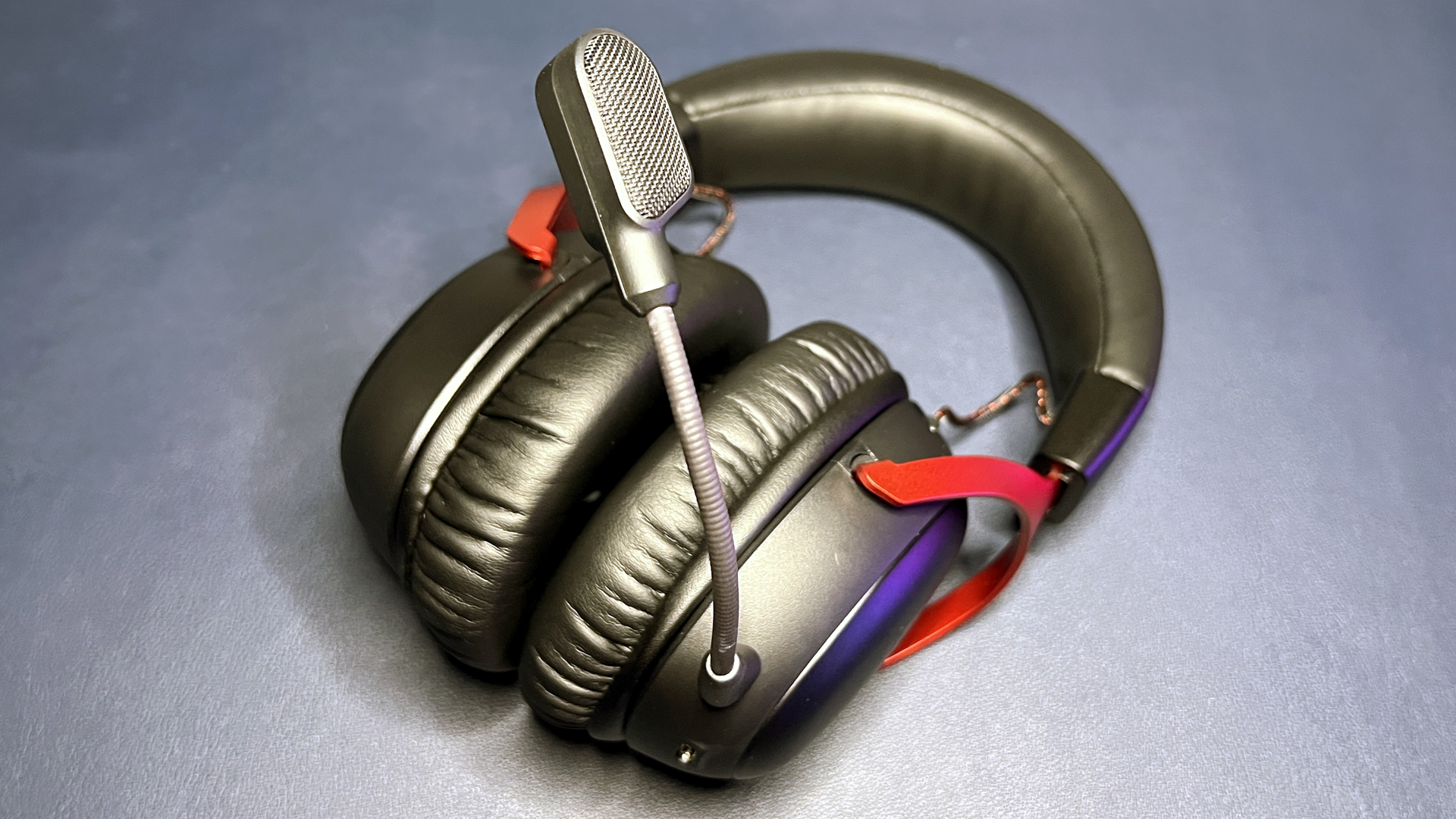
The power button is located below the microphone mute button. Holding it for three seconds powers the headset on/off, and tapping it once triggers a voice prompt with the headset’s remaining battery life (by percentage). Also on the left earcup is a USB-C charging port and a 3.5mm microphone jack.
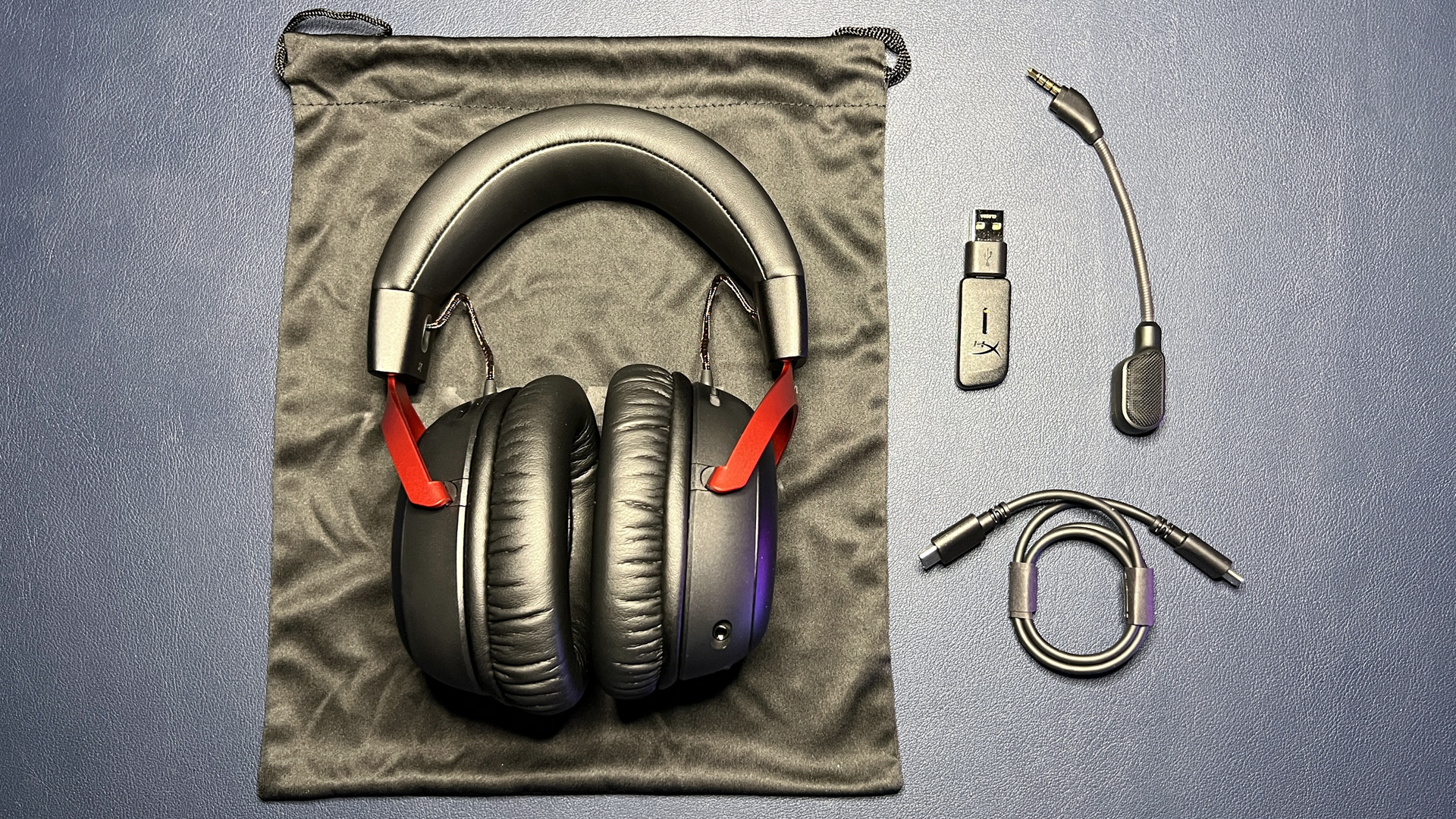
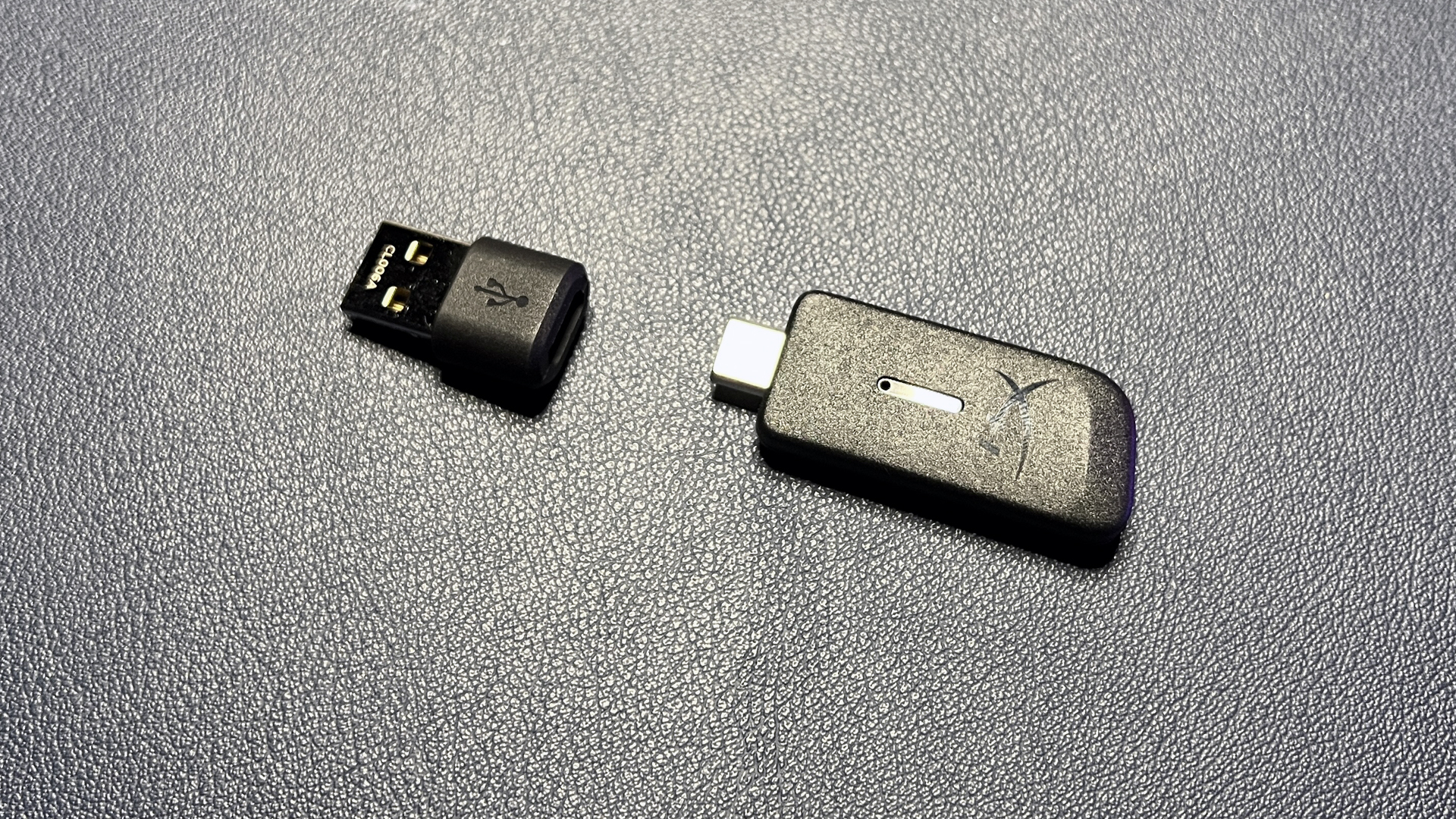
The headset comes with a USB-C 2.4GHz wireless dongle and a USB-C to USB-A converter, a detachable boom mic, a short (approx. 22 inches / 55.9cm) USB-C to USB-C charging cable, and a soft, cloth drawstring bag.
Specs
Driver Type | 53mm dynamic |
Impedance | 64Ω |
Frequency Response | 10 - 21,000 Hz |
Design Style | Over-ear (circumaural) |
Microphone Type | Electret condenser, uni-directional, noise-canceling |
Connectivity | 2.4GHz wireless |
Weight | 11.64oz / 330g 12.06oz / 342g (with mic) |
Cord Length | 22” / 55.9cm USB-C to USB-C (charging only) |
Battery Life | 120 hours |
Lighting | None |
Software | Ngenuity |
MSRP / Price at Time of Review | $169.99 / $169.99 |
Release Date | Aug. 23, 2023 |
Audio Performance of the Cloud III Wireless
The Cloud III Wireless has the same drivers as the Cloud III — 53mm dynamic drivers with a frequency response of 10 - 21,000 Hz. The drivers are the same size as those found in the Cloud II, but they’ve been redesigned and angled for sound that is “accurate, smooth, and detailed,” according to HyperX. The Cloud III Wireless has the same overall audio profiles as its wired counterpart: deep, impactful bass that can be felt in the lower ranges, slightly pulled back mids, and slightly turned-up highs. It’s a fairly balanced profile, overall, but it’s not my favorite for pure listening — mostly because midrange-heavy songs (such as my go-to, K-391’s Lonely World) end up sounding a little dull and lacking in dynamics.
It’s very good for gaming, however, even without any of the software’s (disappointing) tweaks (more on this later). While the headset has a somewhat narrow soundstage, it does spatial audio fairly well — I could tell which direction footsteps were coming from in just about every game, easily, without turning on Ngenuity’s DTS Spatial Sound or Windows Sonic. And while the turned-up highs don’t make for an ideal listening scenario, there’s just enough detail and clarity there for audio cues such as footsteps, gunshots, and all those high-pitched birds and insects in every jungle game soundtrack to be clearly heard.
Microphone of the Cloud III Wireless
The Cloud III Wireless has a detachable 10mm boom microphone — the same mic as the Cloud III, it appears — with an internal mesh pop filter, unidirectional polar pattern, and built-in noise canceling. It sits on the end of a flexible three-inch (76.2mm) gooseneck arm and weighs approximately 0.42oz (12g). The mic can be muted from the headset or from HyperX’s Ngenuity software; muting the mic either way plays a tone and turns on a red indicator light just to the left of the mic. While I am a big fan of this kind of permanently-visible mute status indicator, the light could be brighter or perhaps located further along the mic itself, as it’s still a little difficult to see if you have the mic positioned lower.
The Cloud III Wireless’s microphone, like the Cloud III’s microphone, sounds fine — and that’s it. My voice was relatively full-sounding and clear on voice/video chats and in voice recordings, but the mic’s quality didn’t seem to stand out (for good or bad reasons) to anyone I talked to. The mic did seem to have a relatively low recording volume — an issue we saw on both the Cloud III and the Cloud II Wireless — even with the gain turned all the way up in HyperX’s Ngenuity software.
I’m happy to report that the Cloud III Wireless’ mic did not suffer from the same loud blips from pressing the mic mute button as did the wired Cloud III. Instead, muting the Cloud III Wireless’s mic using the on-ear physical mute button was nearly silent — as it should be.
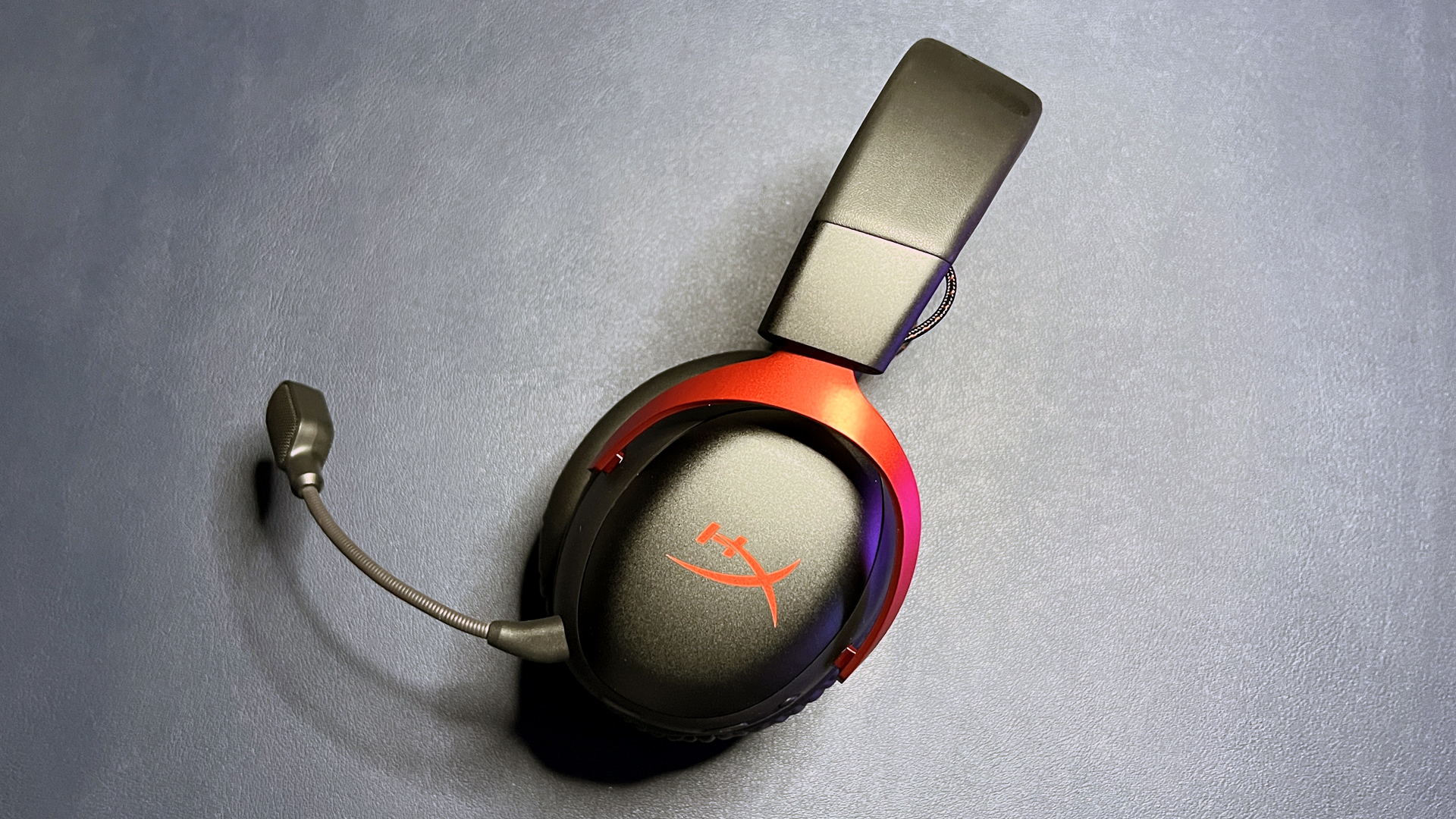
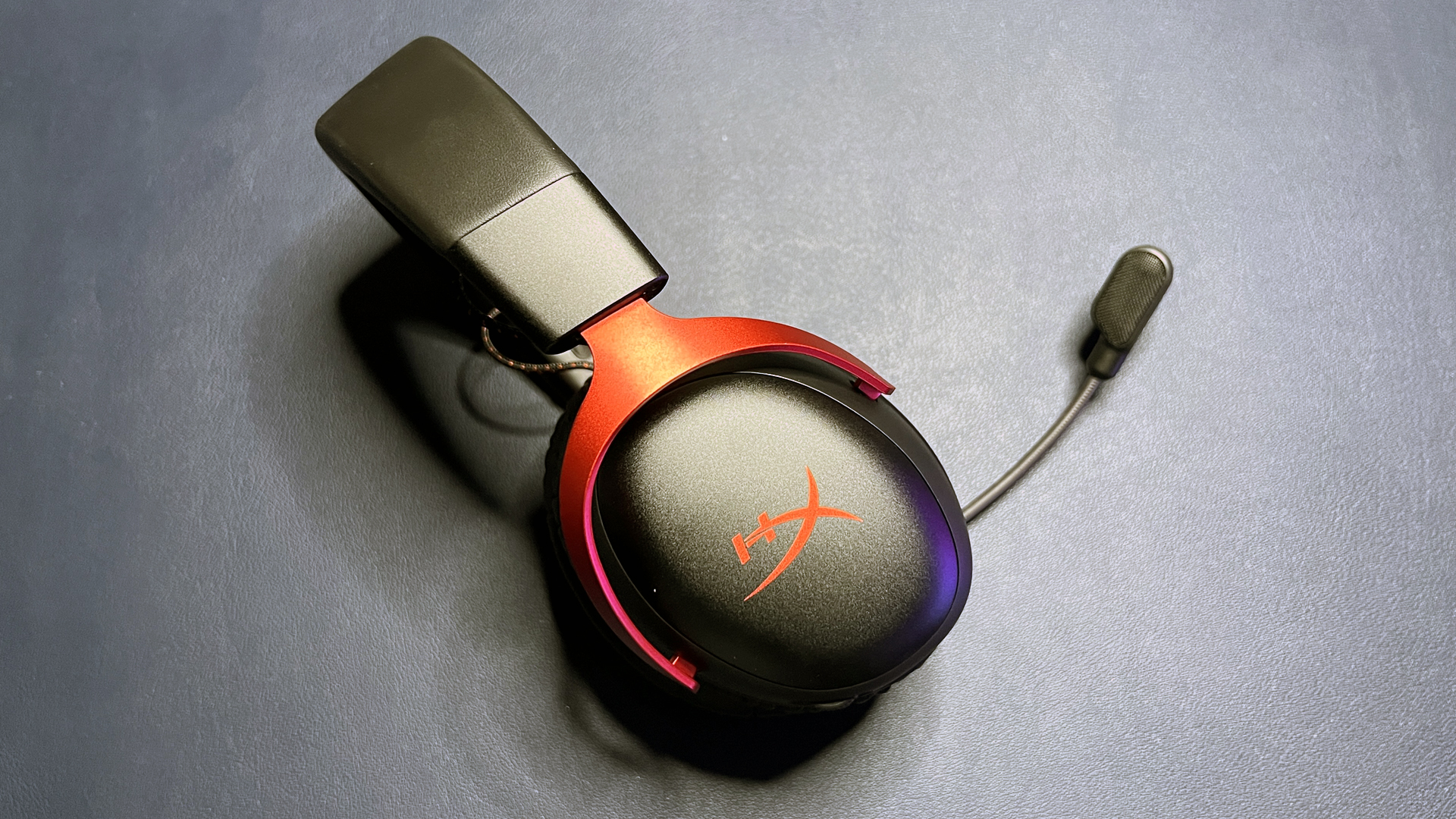
The Cloud III Wireless’s microphone will work fine for most voice/video chatting scenarios — my teammates had no problems hearing me while we were gaming, and nobody commented on my mic’s quality unprompted. But if you’re looking for a mic that will make your voice sound better, you should look elsewhere. The Razer BlackShark V2 Pro (2023) has the best-sounding headset mic we’ve tested, though you’ll still do better with a standalone gaming microphone.
Features and Software of the Cloud III Wireless
The Cloud III Wireless needed a firmware update out of the box, which is performed through HyperX’s Ngenuity peripheral software. It’s not the most useful companion software out there, but it at least seems to have improved (slightly) from what I experienced with the Cloud III.
In addition to firmware updates, Ngenuity offers a handful of software controls including volume/mute, mic mute/gain, and mic monitoring. There’s also a toggle for DTS Spatial Sound, as well as an adjustable equalizer with a handful of presets. When I tested the Cloud III, almost none of these options (minus the redundant ones — volume, mute, mic mute) worked. The features do work, now, with the Cloud III Wireless, but they’re still not particularly impressive.
Mic monitoring turns on... mic monitoring, which allows you to hear your mic’s feedback as you speak so you’re not accidentally shouting at people. This feature is toggleable and works as expected. DTS Spatial Sound is a virtual surround technology that “expands audio into a virtual 3D space, creating a truly immersive environment,” according to HyperX. I’m not sure what this is supposed to mean, exactly, but all this seems to do is expand the soundstage slightly, making environments sound a little fuller. The difference was very negligible in gaming, movies, and music, though it did amplify voices in a slightly strange, echo-y way.
I also found the equalizer to be underwhelming, though it did at least work this time (it did not work when I tested the Cloud III).
Battery Life of the Cloud III Wireless
HyperX rates the Cloud III Wireless’s battery life at 120 hours over its low-latency 2.4GHz wireless connection, which is impressive — most of the best wireless gaming headsets don’t get anywhere near that much battery life over 2.4GHz wireless. (Though it’s still less than half of the jaw-dropping 300 hours the HyperX Cloud Alpha Wireless gets.) And this estimate seems conservative — I wore the headset while playing Baldur’s Gate 3 over the past week (during which I logged around 75 hours — don’t judge me), and the headset’s battery life is still sitting at a little over 50%.
Bottom Line
The HyperX Cloud III Wireless is a great wireless headset — I would go so far as to say I might even be tempted to give it a perfect score if it had more than one connectivity option. It’s got a sturdy, great-looking build. It’s one of the most comfortable headsets I’ve ever worn, and its 2.4GHz wireless connection is rock-solid — this is one of the only wireless headsets I’ve used that still works when I’m in my kitchen, which is separated from my home office by an industrial steel-and-concrete wall approximately four feet thick. Almost nothing gets through this wall — I’ve used a few headsets that can keep a tenuous signal through it, but the Cloud III Wireless didn’t even hint at dropping its connection.
But I was surprised to find how much the Cloud III Wireless’s lack of a second connectivity option inconvenienced me. While the headset’s USB-C dongle is compatible with a variety of devices, most people don’t want to have to shuffle a dongle around. I don’t even need to have two wireless connectivity options — if the Cloud III Wireless had a wired option, I could plug it into my PC and stick the dongle in my PS5. I’m not surprised that HyperX decided to go this way, as its Cloud II Wireless and Cloud Alpha Wireless also connect via 2.4GHz wireless only, but it’s a surprisingly limiting choice nonetheless.
If you’re looking for a headset for only one device, such as your PC, the Cloud III Wireless is a great choice — but so is the wired Cloud III, which is only $100. The Cloud III Wireless’s $170 price is a lot to pay for a single-device peripheral, especially when you can pick up a multi-tasker such as the Corsair HS80MAX for the same price.

Sarah Jacobsson Purewal is a senior editor at Tom's Hardware covering peripherals, software, and custom builds. You can find more of her work in PCWorld, Macworld, TechHive, CNET, Gizmodo, Tom's Guide, PC Gamer, Men's Health, Men's Fitness, SHAPE, Cosmopolitan, and just about everywhere else.
-
Findecanor I would like to see a durability test of the headphone's hinge - what it takes before it breaks. Some kind of standardised test that could be used for comparing different headphone models against each other.Reply
Headphones always break at the hinge before anything else. -
Sleepy_Hollowed It would be great if it had a wired option for when the battery dies, for sure, what a slip up, considering that their competition has this.Reply
That's the one thing that sits wrong with me for example with the older Beats Studio 3 where, while it has a wired connection, it only works when the headphones have battery charge.
